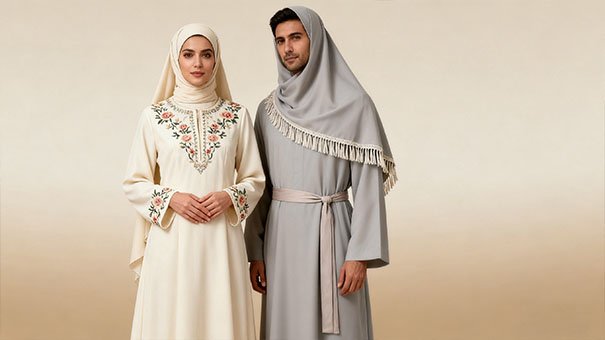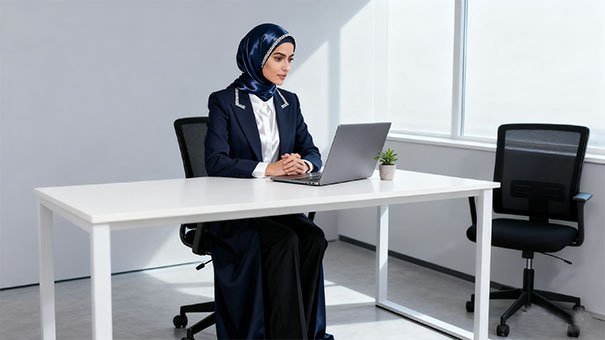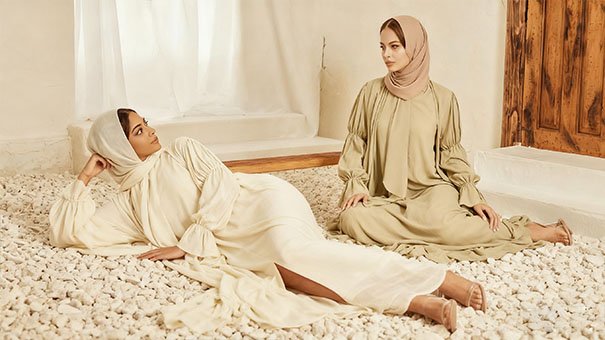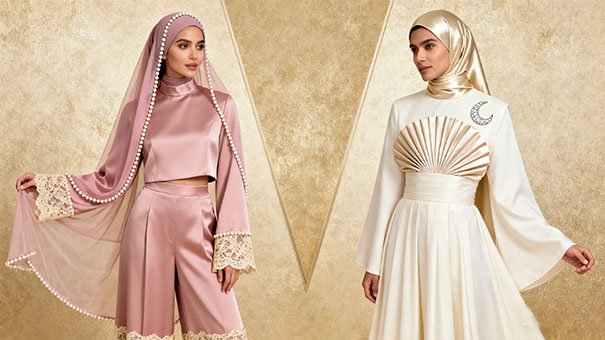Table of Contents
- What is an Abaya? A Brief Overview
- Abaya: The Fashion Statement of Modesty
- Abaya and the Middle Eastern Fashion Culture
- Abaya: A Symbol of Modesty and Empowerment
- The Evolving Fashion of Abayas: What’s Next?
- How to Style Your Abaya: Tips for Modern Women
- FAQs
- Conclusion: Why the Abaya Remains a Fashion Essential
What is an Abaya? A Brief Overview
An Abaya is a loose-fitting, full-length robe traditionally worn by women in the Middle East and other parts of the Muslim world. It is designed to cover the body, providing both modesty and elegance. While its origins trace back to ancient Arabic cultures, the Abaya has evolved into a fashion statement that reflects the changing trends of modest clothing.
The Abaya can be simple or elaborately decorated, depending on personal style, occasion, and cultural background. It is typically worn over regular clothing and is often paired with a Hijab, a headscarf worn by Muslim women. In many ways, the Abaya is not just a piece of clothing but a symbol of cultural pride and identity.
Abaya: The Fashion Statement of Modesty
In modern fashion, modesty is increasingly being embraced as an important style choice. The Abaya, as a part of the modest fashion movement, offers a perfect blend of style, comfort, and cultural heritage. It is no longer confined to traditional settings but has become a versatile wardrobe piece that reflects contemporary designs and diverse tastes.
Modest fashion is not just about covering up; it’s about making thoughtful choices that respect individual values while still looking stylish. For those seeking a balance between elegance and modesty, the Abaya serves as the ultimate solution. From minimalist designs to vibrant embroidered patterns, the Abaya allows women to express their unique fashion sense without compromising on modesty.
Abaya and the Middle Eastern Fashion Culture
The Abaya has its roots deeply embedded in Middle Eastern culture. Traditionally, it was worn as a form of protection and respect for privacy, as well as to adhere to cultural norms surrounding modesty. Over time, it has evolved to encompass a range of different styles, often incorporating intricate embroidery, beads, and sequins.
In the past, the Abaya was mostly a black robe, but today, it’s available in various colors, fabrics, and cuts, making it a flexible piece suitable for both casual wear and formal occasions. The design of the Abaya often reflects a balance of tradition and innovation, blending classic shapes with modern, fashionable elements.
For instance, in countries like Saudi Arabia, the Abaya is worn daily, while in places like the United Arab Emirates, it is a popular choice for both work and social events. Fashion-forward designs are increasingly seen on runways, signaling a shift toward integrating traditional garments into global fashion trends.
Abaya: A Symbol of Modesty and Empowerment
One of the key aspects of the Abaya is its symbolic role in empowering women. It’s not just about modesty; it’s about freedom—freedom to express oneself while staying true to one’s beliefs and values. For many women, wearing an Abaya is a personal choice that connects them to their culture, faith, and identity.
The Abaya also serves as a powerful statement of resistance against societal pressures regarding beauty standards. By choosing modesty over revealing clothing, women reclaim autonomy over their bodies, sending a message that clothing is not about seeking approval but about individual comfort and respect.
The Evolving Fashion of Abayas: What’s Next?
The world of Abaya fashion is evolving rapidly. While it has been traditionally seen as a conservative garment, modern designers are taking the Abaya in bold new directions. From lightweight, breathable fabrics for summer to luxurious velvet Abayas for evening wear, the design possibilities are endless.
In addition to fabric innovation, the Abaya’s cut and structure are also being experimented with. Slimmer silhouettes, asymmetrical cuts, and chic draping are just a few examples of how the Abaya is adapting to meet the demands of modern fashion. These contemporary variations allow women to wear their Abayas in diverse settings, from casual outings to formal gatherings, while still honoring the garment’s cultural and religious significance.
How to Style Your Abaya: Tips for Modern Women
The beauty of the Abaya lies in its versatility. Whether you’re attending a formal event or going for a casual look, the Abaya can be styled in countless ways. Here are a few tips to help you style your Abaya:
- Pair with a Hijab or Shawl: If you want a more traditional look, pair your Abaya with a matching hijab or shawl. You can choose a color that contrasts with the Abaya for a bold look, or keep it monochrome for a sleek appearance.
- Layer it with Accessories: Add some flair to your Abaya by layering it with accessories like statement necklaces, belts, or scarves. This adds personality without compromising modesty.
- Footwear Matters: Pair your Abaya with stylish footwear. For casual wear, opt for sandals or sneakers. For a more formal look, choose heels or elegant flats.
- Experiment with Fabrics and Colors: Don’t be afraid to step out of the traditional black. Try different fabrics like chiffon, silk, or satin for an elegant feel, or go for bold colors and prints that align with current fashion trends.
Frequently Asked Questions (FAQs)
Q1: What is the difference between an Abaya and a Hijab?
An Abaya is a loose-fitting robe worn to cover the body, typically paired with a Hijab, a headscarf worn to cover the hair. While the Abaya is a garment, the Hijab focuses on head covering.
Q2: Can I wear an Abaya outside the Middle East?
Absolutely! The Abaya is a global fashion piece that can be worn anywhere. It’s especially popular among those who prefer modest dressing, and it’s increasingly seen in fashion shows around the world.
Q3: How do I choose the right fabric for my Abaya?
When choosing fabric, consider the climate and occasion. For hot weather, chiffon or cotton are light and breathable. For formal occasions, silk or satin give an elegant finish.
Q4: Is the Abaya suitable for all body types?
Yes! The Abaya is designed to be loose-fitting, which makes it flattering for various body types. It’s versatile and can be tailored to fit your personal style while maintaining comfort.
Conclusion: Why the Abaya Remains a Fashion Essential
The Abaya has not only survived the test of time but has evolved into a fashion essential for women globally. Its cultural significance, combined with its versatility, makes it an iconic garment in the world of modest fashion. As we see more fashion-forward designs and innovations, the Abaya continues to shine as a symbol of both tradition and modernity.
Whether you are exploring the world of modest fashion for the first time or you’ve been wearing Abayas for years, it’s clear that this garment will remain a timeless piece in your wardrobe.







One Comment